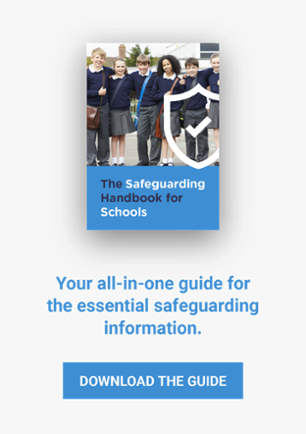Online safety is just as important as traditional safeguarding, particularly as so many young people have smartphones, computers and social media accounts. Social networking sites present unique safeguarding challenges and are used by huge percentages of young people.
Research has found that Facebook (72%) and Instagram (65%) are the most popular platforms among 12 to 15-year-olds. It’s statistics like these that highlight just how vital it is for schools to understand e-safety legislation and how they can ensure young people stay safe online.
The Risks Young People Face Online
To provide effective online safety support, we need to consider the risks that young people are presented with each time they browse social media or use the internet.
Inappropriate Material
Many websites have age restrictions to prevent young people from seeing inappropriate material. These restrictions are often easy to navigate and rely on honesty from the user. This is why it’s so important to educate young people on why these age limits are in place.
Outline why this material is inappropriate and the dangers of seeing something they shouldn’t. Review the content filter that’s currently in place on the school network and encourage parents to implement blocks on sites that feature inappropriate content.
Fake Websites and Scam Emails
Fraudulent links and phishing scam emails are created by hackers to extort money from users. Many of these emails and links are very convincing and it’s easy for a young person to think they’re on a website they can trust.
Offer education on how to spot scam emails and fake links. They should be able to spot the signs of a trusted website so they only ever input personal data where appropriate. If they do suspect that they’ve entered a fake website or clicked a malicious link, then they should be aware of what to do next.
Microtransactions
A survey found that 39% of UK parents are worried about their children being pressured to make in-game purchases. It’s a growing problem that can lead to children accidentally spending hundreds of pounds on mobile games.
These games often entice children into using them but then ask for payment so they can keep playing. Before long, these charges can reach significant amounts without the bill payer realising until it’s too late.
Children need to know which games are free to play and which feature microtransactions. Explain what these payments are so they know that they need to ask permission from their parents.
Password Safety
From an early age, children need to know the importance of keeping their passwords private. As they’re given more freedom online to have social media, email and banking accounts, they need to ensure their passwords are strong and kept private.
They might have an account for a school-related online programme, so outline how to create a password and highlight general best practice tips. If they think their password is compromised, then explain the steps they should do to protect accounts.
Cyberbullying
The National Crime Prevention Council found that 43% of children have experienced online bullying in one form or another. It could be private messages or public comments on a child’s photo - anything that causes emotional harm via social media.
Your school can be part of the cyberbullying solution by understanding what it is and adopting a zero-tolerance policy towards it. Like traditional bullying, it’s completely unacceptable and there are serious consequences for anyone who’s taken part.
E-safety legislation like ‘Preventing and tackling bullying’ and the Education and Inspections Act 2006 go into more detail regarding cyberbullying and the action schools should take.
Outline examples of what cyberbullying is so there’s no doubt in the future. Threatening messages, posting pictures of someone without their permission and impersonation are just some of the common methods of cyberbullying.
Consider the advice you’d give to pupils that are worried about cyberbullying. Do they know they should block anyone who’s posting negative material? Are they aware of the steps they should take to report someone who’s cyberbullying them?
You should take cyberbullying as seriously as traditional bullying. Just because it’s not as visible, it doesn’t mean the impact isn’t as potentially devastating for a young person.
The Steps Your School Should Take
Schools should educate children about the risks covered above in a safe and considerate way. Like with any potentially sensitive topic, children should feel as though they’re in a safe and accepting environment.
You might want to ask children whether or not they’ve seen something online they shouldn’t have, or if they’ve seen negative comments on social media. Avoid any specifics but give children the opportunity to think about some of the harmful content they’ve previously encountered.
If a child wants to privately give details of cyberbullying or harmful online content, then they should feel comfortable enough to approach any member of staff. Like with any disclosure, that staff member needs to know the exact steps to take and approach the situation in a professional yet comforting way.
Consider the school’s current computer network and how much access users have on it. Can they access their social media or collective forums where potentially negative messages could be posted? Implement a school online safety code that all children must follow.
Ask for their insight when creating the code so that all children feel more responsible. Also decide on the consequences if someone were to break that code. However, e-safety is just one aspect of effective safeguarding that aims to create a safe and protective environment for all pupils.
Download The Safeguarding Handbook
For a detailed look at safeguarding, your responsibilities and some of the key signs to look out for in vulnerable children, download our handbook. Get your free copy using the link below and make sure your school is doing enough to keep everyone safe.
